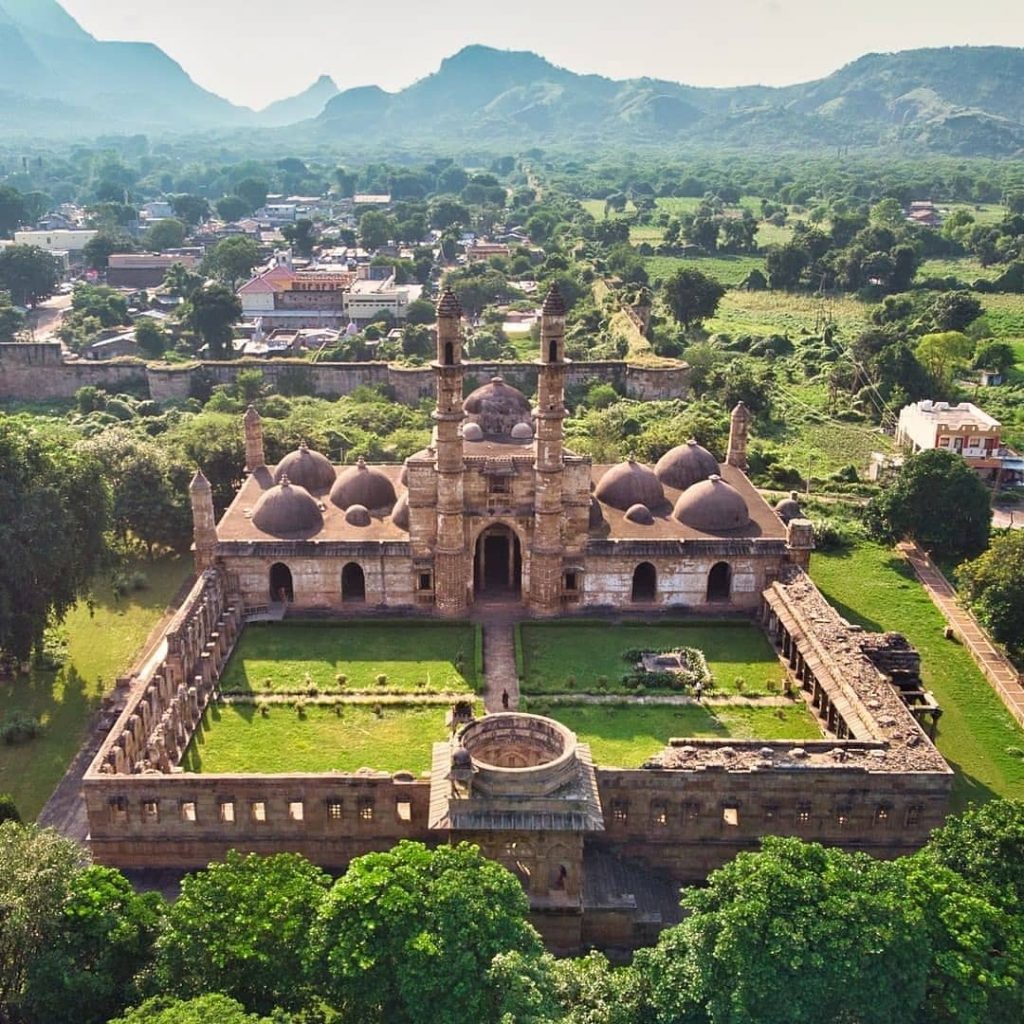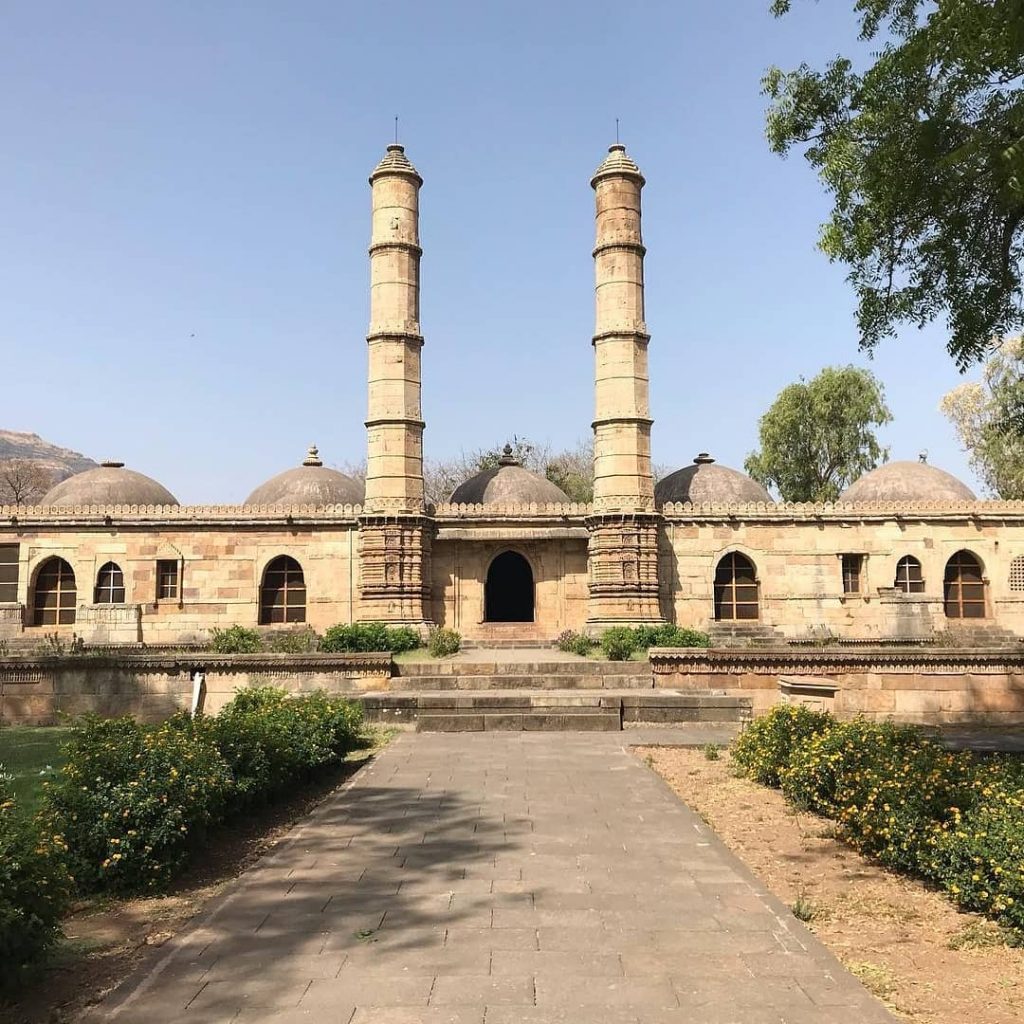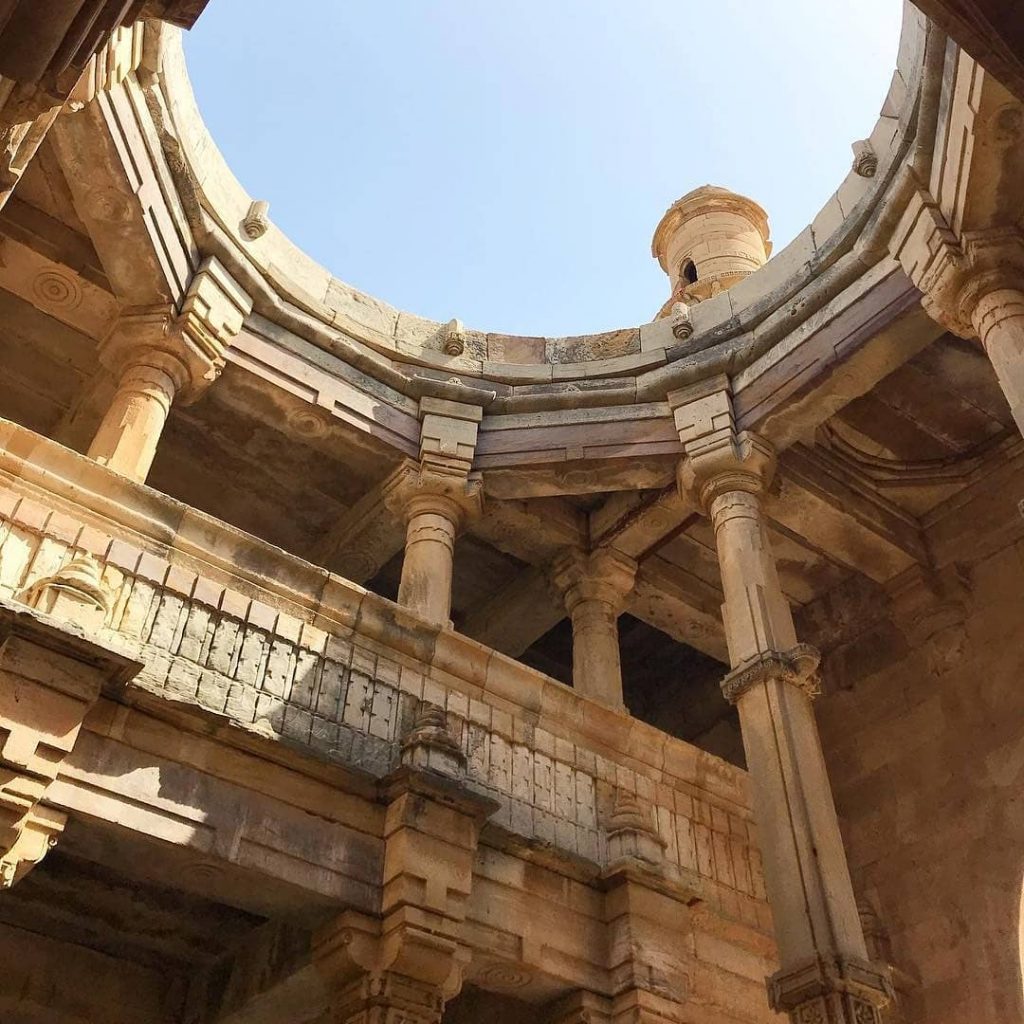Champaner – The Historical city Panchmahal Vadodara
Champaner is a historical city in the state of Gujarat, in western India. It is located in the Panchmahal district, 47 kilometers from the city of Vadodara. The city of Samu Lala was briefly the capital of the Sultanate of Gujarat.
Champaner was founded by Vanraj Chavda, the most prominent king of the Chavda Dynasty, in the 8th century. He named it after the name of his friend and general Champa, also known later as Champaraj. By the later 15th century, the Khichi Chauhan Rajputs held Pavagadh fort above the town of Champaner. The young Sultan of Gujarat, Mahmud Begada, deciding to attack Champaner, started towards it with his army on 4 December 1482. After defeating the Champaner army, Mahmud captured the town and besieged Pavagadh, the well-known hill-fortress, above Champaner, where king Jayasimha had taken refuge. He captured the Pavagadh fort on 21 November 1484, after a siege of 20 months. He then spent 23 years rebuilding and embellishing Champaner, which he renamed Muhammadabad, after which he moved the capital there from Ahmedabad.
Champaner is today the site of the Champaner-Pavagadh Archaeological Park, which UNESCO designated a World Heritage Site in 2004.
There are some places in champaner to visit.
- Maa Mahakalika Temple
- Jama Masjid
- Saher Masjid
- Nagina Masjid
- Kevda Masjid
- Lal Gumbaj Masjid
- Kamaani Masjid
- Bawaman Masjid
- Khajuri Masjid
- Stepwell
- Jain Temple
- Udan Khatola at Manchi
- Saat Kaman
- Amir Manzil
- Champaner Fort
- Citadel Of Mahmud Beghada
- Hissar I Khas
- Khapra Zaveri Palace
- Sikandar Shah S Tomb
- Virasat Van
- Vada Talav
- Khuniya Mahadev (Best to visit during monsoon season to enjoy waterfall near khuniya mahadev)
Pavagadh Fort
This is one of the most important tourist destinations in Champaner. During the Solanki reign, it used to be a palace. It now stands only in parts that are reminiscent of the ancient Hindu Lakulisa Temple and other Hindu and Jain temples of the Nagara style. It is situated atop Pavagadh Hill and is now preserved under the Archaeological Department of India
Champaner-Pavagadh Archaeological Park
This famous park is a historical rich concoction of unexcavated archaeological living and past cultural heritage properties like chalcolithic sites and remains of the 16th century capital state of Gujarat. This site is a mirror to the 8th-14th century Gujarat and it takes you back to the past through the various water installations, vagaries, residential precincts, fortifications and religious buildings of the contemporary period. The most important shrine of this park is the Kalikamata Temple which attracts a considerable number of tourists every year.
Jambughoda Wildlife Sanctuary
This sanctuary, located in the Panchmahal district of Central Gujarat, is home to a wide variety of plants and animals. Targol Round, a small part of the sanctuary, shares its space with the Vadodara district. This is a dense forest filled with fascinatingand magnificent species of trees like teak, bamboos and others. Two water reservoirs, one at Kada, the other at Kargol, amp up the aesthetic value of this place. The habitat is shared by animals such as leopards, wild boar, blue bulls, sloth bears, four-horned antelopes and jackals.
Sikander Shah’s tomb
Sikander Shah was the ruler of Champaner and was murdered by a man named Imad-ul-Mulk in 1526 AD. He and his brothers are buried here. It is a simple yet regal structure covered by fluted domes. Its architectural style is a remarkable mixture of craftsmanship and aesthetics. It is open all days of the week from 8 am to 6pm.
Masjids of Champaner
Champaner houses several famous mosques which stand testimony to time since the Mughal reign. Most of these date back to the 15th century. Some of these mosques are:
Nagina Masjid, situated on a high plinth which is placed in front of a wide open field. The center hall is surrounded by standing cenotaphs on three sides. The nearest cenotaph is beautifully carved with niches and columns.
Jama Masjid, the central mosque of Champaner is flanked by two 30m minarets at the entrance. The pillared courtyard and two-storied open arcades are intricately carved with jaalis and details.
Kevada Masjidhas cenotaphs near its tank for ritualistic reasons and also has carved mehrabs
Lila Gumbai ki Masjid lies on a raised platform, has a huge central dome that was once colored, and also has a hanging kalash in the central praying hall.
Sahar ki Masjid is located just next to the royal entrance and is believed to be the private mosques of many Sultans with domes overall its three entrances.
Helical Step well
This famous one-of-a-kind well has a spiraling narrow staircase along the walls of the well give it an unusual appearance. It is a 16th-century creation designed by one of the Champaner rulers as a part of the efforts to spur better water management in the period. November to February is the ideal time to pay a visit to this unique creation.



Very nice brother
Thanks brother for supporting…keep supporting…